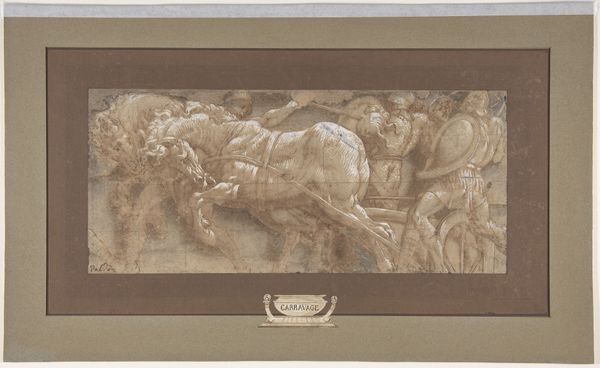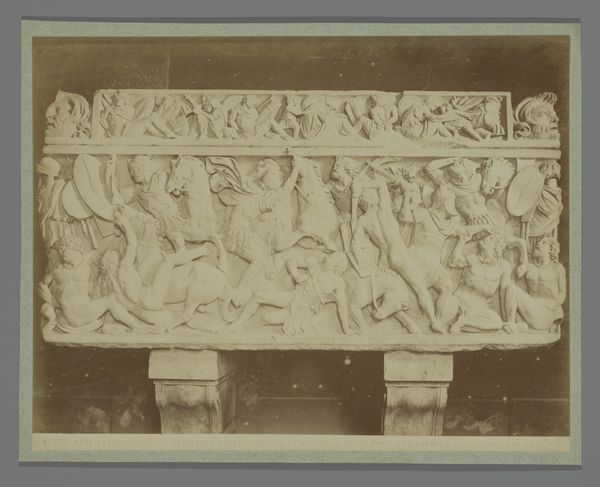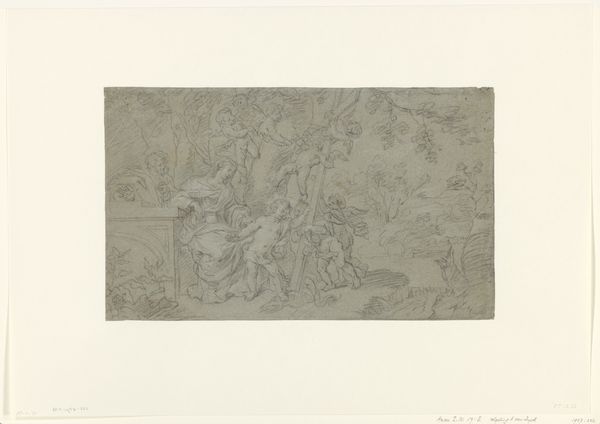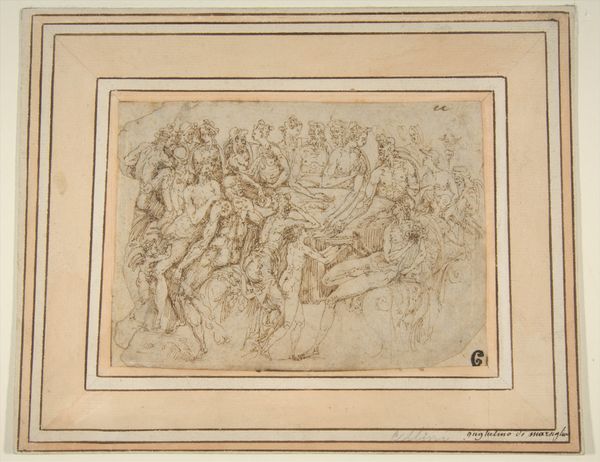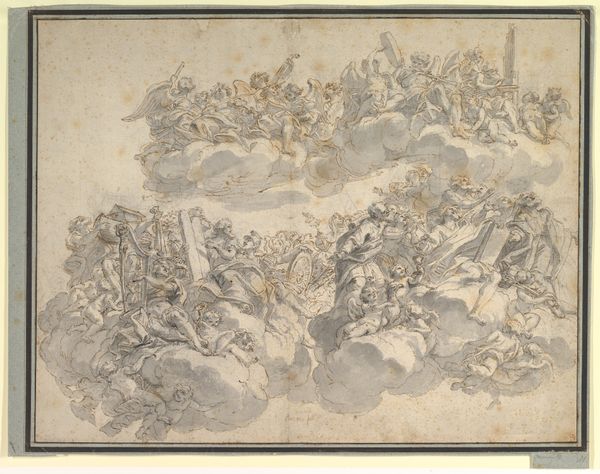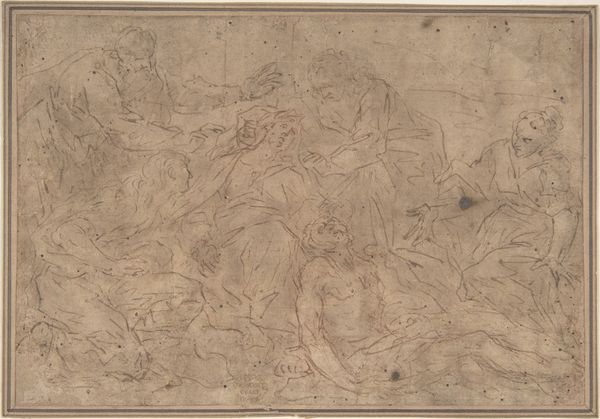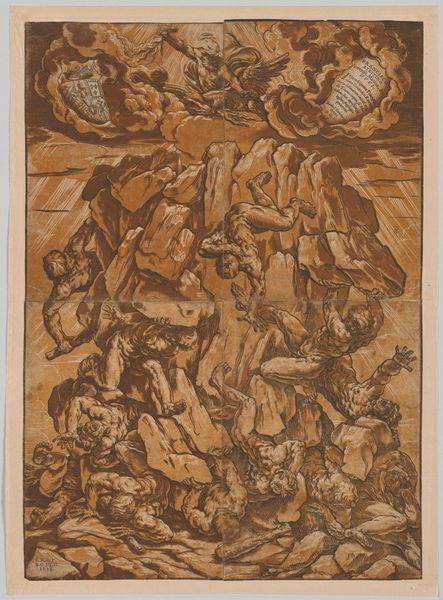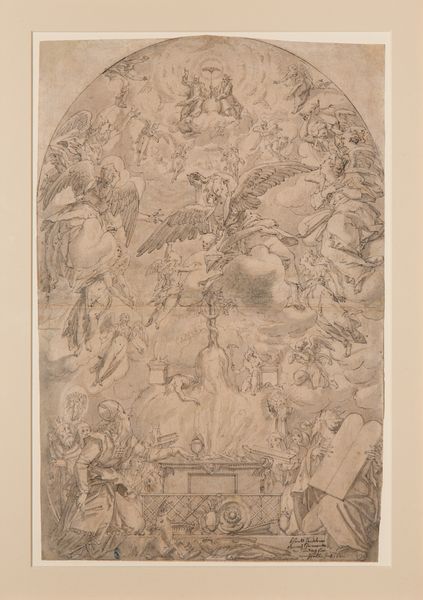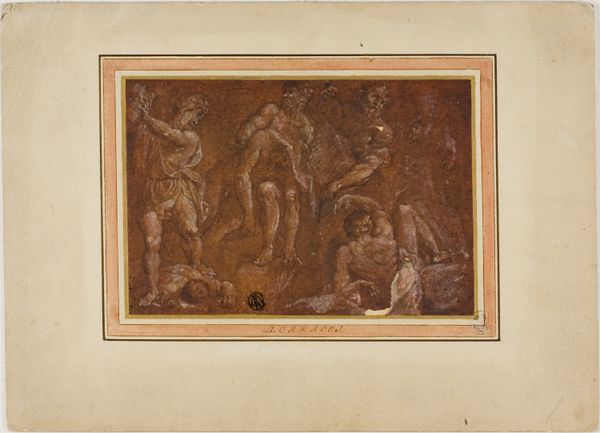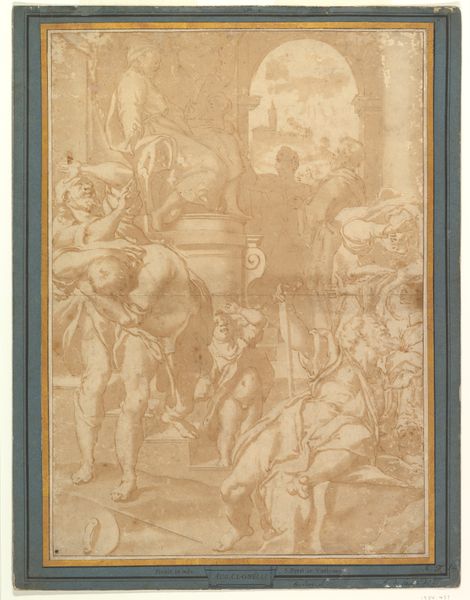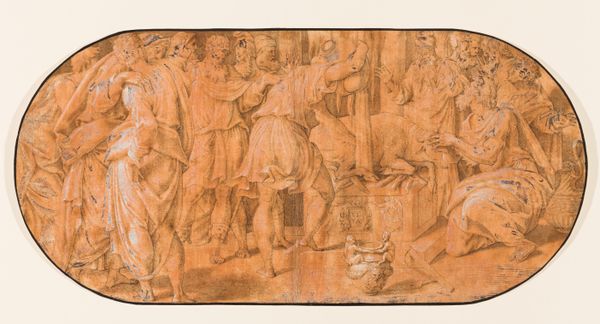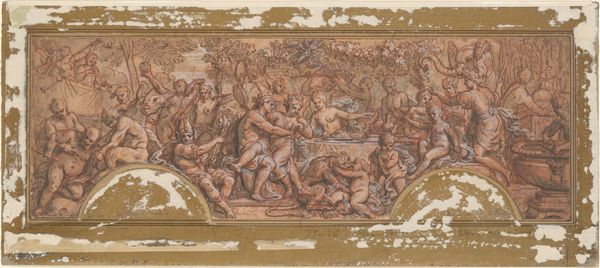
drawing, print, pencil
#
drawing
# print
#
mannerism
#
figuration
#
soldier
#
pencil
#
horse
#
history-painting
#
sword
#
watercolor
Dimensions: 5 5/16 x 12in. (13.5 x 30.5cm)
Copyright: Public Domain
Curator: What a dramatic piece! My eye is immediately drawn to the clashing figures. Editor: This is Lelio Orsi's "Battle Scene," created sometime between 1511 and 1587. The medium is listed as drawing, likely pencil and watercolor, now held at the Metropolitan Museum of Art. There's a controlled frenzy to the composition. I notice the use of line, the way he defines form…it almost reminds me of a bas-relief sculpture. Curator: I see that too—it has this shallow depth. And that speaks volumes. Battles in art are always more than just war, they represent social upheavals and clashing ideals. Given Orsi’s era, this might be interpreted as an allusion to the religious and political tensions during the Renaissance. Editor: It’s interesting you mention religion. Mannerism, which the piece aligns with, often sought to heighten emotional intensity. Consider how the artist arranges bodies in dynamic poses; notice the twisting torsos and the foreshortening of limbs. He amplifies the chaos and, quite deliberately, guides our eye across the picture plane. The figures’ anatomy are…exaggerated, almost theatrical. Curator: True, but consider also the symbolism of armor and weaponry. Swords were potent symbols of power, the horse a classical allusion to triumph…Orsi layers these icons creating an arena of virtue versus vice. But notice their faces are contorted—are they triumphant or tormented? Perhaps Orsi wanted to explore the psychological impact of conflict? Editor: That reading certainly brings another dimension to my structural understanding. These artful exaggerations are devices used by the artist to elicit heightened responses to fundamental human drives, impulses which are then embedded in our shared, evolving cultural experience. Curator: Exactly. "Battle Scene" isn't merely a depiction of war, it reflects an understanding of conflict as deeply entwined with both conscious choices and underlying historical, social narratives. Editor: Seeing that it pulls on our cultural consciousness makes me think I initially underestimated its resonance. I was locked up analyzing the aesthetic strategy but you are right to look at what it may be saying on a broader, human scale.
Comments
No comments
Be the first to comment and join the conversation on the ultimate creative platform.
